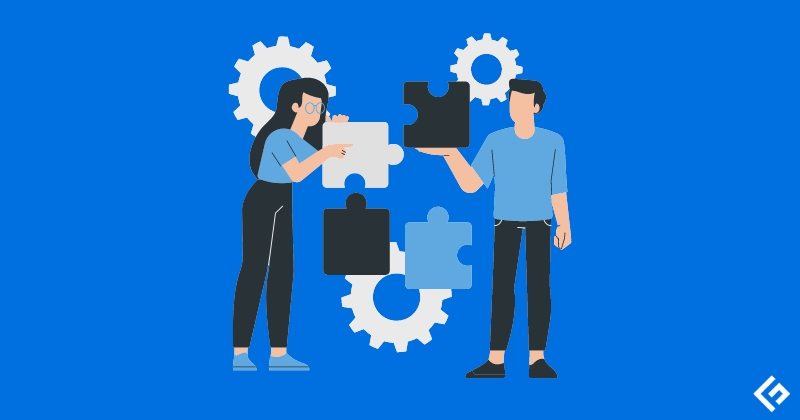Management Information System (MIS) is a computing system used in organizations to support decision-making by collecting, storing, processing, and providing information on key business metrics.
MIS combines technology with people and existing business processes to help decision-makers make data-driven decisions.
MIS helps companies use information efficiently and effectively by providing the right information to the right people at the right time. In this article, we’ll cover the evolution, key components, benefits, implementation, and common challenges of MIS.
Evolution of MIS Over the Years
MIS has evolved over time, and understanding it is important. Before the invention of computing systems, data was manually recorded on mediums like punch cards. In the 1950s, organizations realized that they could easily store a large amount of data using computers.

From Manual to Digital: The Early Days of MIS
In the 1950s and 1960s, large and bulky computers were used to store and process financial and payroll data stored in a central database. Personal computers did not exist, and central teams handled database management for upper management.
Data Processing to Information Extraction: The Evolution of MIS
In the 1970s, there was a transition from simply storing raw data to analyzing and deriving valuable insights from it. Companies began to see the value in processing data to gain valuable information. This led to the development of MIS, where computers were utilized not only for record-keeping but also for extracting insights and information.
Decentralization and Decision Support: The Rise of DSS
The 1970s and 1980s marked the emergence of personal computers, leading to a decentralization of information storage and processing within organizations. Teams began using personalized systems, known as Decision Support Systems (DSS), to aid in business decision-making. These systems provided historical and ad hoc reports to facilitate informed choices.
Integration and Expansion: EIS to ERP Systems
From the 1980s to the 2000s, Executive Information Systems (EIS) and Enterprise Resource Planning (ERP) systems became prevalent. These systems evolved over time, requiring greater technical skills for optimal use. As business needs grew, organizations began employing multiple solutions to meet their requirements.
The Data-Driven Future: Leveraging IoT and AI for Business Advantage
The future of business will rely heavily on data-driven decision-making, with organizations utilizing data from various sources and leveraging IoT and artificial intelligence for more accurate predictions.
Key Components of MIS
Management Information Systems have 5 key components. Let’s understand what they are and why they are important.

#1. Hardware
Hardware in MIS includes physical components like computers, storage, networking devices, and peripherals such as printers and projectors. These components help store, process, transfer, and showcase data.
#2. Software
The software used in MIS helps capture, process, analyze, and retrieve data. It can be classified into system software and application software.
#3. Data
MIS requires data as the key component, which can be collected from different sources like IoT sensors and transactions. The data is stored on hardware, and software analyzes and extracts useful information from it.
#4. Procedure
Business procedures are rules that govern the flow of data from the source to final reports. They ensure standardization and maximum efficiency in data collection, access, processing, and report generation.
#5. People
People are the end users of MIS in organizations, including top management, functional heads, and staff involved in the data management lifecycle. They are known as actors in the system, interacting with the MIS for data capturing, analysis, reporting, and making business decisions.
How does MIS Support Business Operations?
MIS plays a crucial role in supporting business operations in today’s fast-paced and technology-driven world. Here are some use cases in which MIS supports business operations.

Decision-Making
MIS in business operations plays a crucial role in effective decision-making by collecting and analyzing data from various sources to provide valuable insights into trends and forecasts, such as sales transactions, customer feedback, and inventory count.
MIS provides decision-makers with easy access to relevant information, allowing them to make data-driven and strategic decisions and implement risk management measures to mitigate potential downsides for the organization.
Algorithms, simulation models, and trend projection systems are important tools for making future predictions and identifying opportunities for taking necessary actions.
Strategic Planning
Strategic planning is the process of setting long-term goals, defining a company’s vision, and determining ways to achieve them. It involves considering the future, internal strengths and weaknesses, and external opportunities. Thus, MIS fits perfectly with project management plans.
MIS helps identify and assess organizational strategy by collecting and analyzing data on market trends, consumer behavior, sales, and competitors to gain strategic insights. For example, MIS integrated with supply chain management to improve procurement processes and relationships with sellers.
MIS facilitates SWOT (Strength, Weakness, Opportunity, Threat) analysis by providing relevant insights into current data, as well as predicting future trends. This enables organizations to anticipate future challenges and opportunities and develop strategies to address them.
Operational Efficiency
MIS helps in decision-making and strategic planning and increases operational efficiency by automating routine tasks and workflows. This reduces manual efforts, duplicate work, and errors, allowing employees to focus on business objectives.
Organizations use some form of Infomation Security Management System for employee authentication and authorization. MIS can leverage this to optimize resource allocation and provide data access based on access levels.
With real-time dashboards and trend charts, you can monitor your business process’s performance against predefined benchmarks, metrics, and trend lines. You can easily spot inefficiencies and bottlenecks and aim for improvement.
How to Implement MIS?
Implementing MIS in your business comes with a lot of exciting possibilities, but it comes with challenges. Let’s look at the steps involved.

Understanding the Needs and Goals
Before finding a solution, it is important to understand the organization’s needs and goals. This helps align with requirements and plan for the next steps. Whether historical data analysis or real-time reporting is needed, having clear goals in place is crucial for implementing the right solution.
Choosing the best MIS solution
MIS solutions can cater to a wide range of requirements, so it’s important to ensure that they align with your needs, goals, budget, features, scalability, and compatibility with existing systems.
Strategically Planning and Defining Implementation Phases
After setting goals and selecting an MIS, the next step is to plan the implementation phases, involving representatives from internal teams and the vendor. It is important to have different phases for implementation to ensure that daily business operations are not affected.
Efficient Data Migration Process
Data migration is the transferring of data from one system to another, often from an old system to a newer one. This process may include transforming data from one storage form to another and manually transferring data from physical records to digital format.
Training and Skill Development
With the MIS in place, your team members need to be trained on how to use them efficiently and effectively. This not only involves technical training on how to handle the software but also laying out the business processes and ensuring that all members are well aware of them.
Thorough Testing and Evaluation
Before launching a new feature or product, it is a good idea to test it out first with a demo or a smaller group of users. Once you are satisfied with the results, you can then proceed with a larger-scale launch.
Successful Launch and Monitoring
The MIS for the entire organization is ready to be launched. Make sure monitoring and failover strategies are set up. Be prepared for any unforeseen challenges in the initial days.
Post-Implementation and Improvements
MIS systems are always evolving, so it’s crucial to continuously improve the system you’ve implemented. Gather feedback from users to identify any challenges they’re facing and take action to address them effectively.
Common Challenges in Implementing MIS
While implementing an MIS sounds promising, it comes with its own set of challenges. Let’s look at some of the common challenges you might face when implementing MIS and how you can overcome them.

Doesn’t Address the Business Requirements
It is important to carefully analyze business requirements and goals before implementing a solution to avoid investing time and money into a system that does not meet the organization’s needs.
Data Quality Issues
Data quality is crucial in MIS as decisions are based on it. Issues with data quality, such as noise or redundant data, can arise if data sources are not properly defined or filtered before being stored in the system.
Organizations should have a data governance plan to ensure data accuracy and consistency, especially during the initial data migration stage.
Integration Challenge With Existing Systems
A new system that does not integrate well with an existing system can lead to data loss and disrupt the flow of information. This can have a negative impact on the performance of the new system.
For Instance, if a new management information system is not well integrated with an existing supply chain management system or customer relationship management, data sync will be difficult, which may impact the MIS’s performance.
You can either invest in a MIS that comes with a strong suite of integrations. Alternatively, building custom integration solutions as an added layer can also be helpful.
Gaps in Training
The end users of your MIS are responsible for using it to its fullest extent. Thus, it’s important that these users receive proper training. Otherwise, even with the most sophisticated system in place, your business growth might be hampered if the users aren’t able to use the system to its maximum capacity and capability.
Ensure that there are sufficient training programs. These must go beyond the basic software functionalities. List down documentation and guides. Additionally, you must have support from the vendor.
Frequently Asked Questions
The 5 main types of management information systems are:
1. Management Reporting Systems
2. Decision Support Systems
3. Transaction Processing Systems
4. Human Resources Systems
5. Process Control Systems
Many large global companies use MIS to streamline operations. Walmart manages inventory and analyzes sales trends with MIS. Apple uses MIS for product development, marketing, and sales. In summary, any company using data for business decisions utilizes MIS.
Management Information Systems (MIS) offer benefits such as improved decision-making, increased efficiency, enhanced communication, collaboration, strategic planning support, improved productivity, cost savings, and competitive advantage for businesses and organizations.

